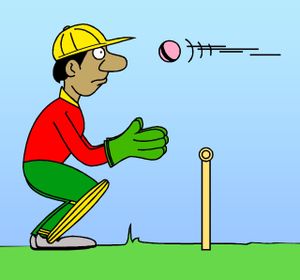A little while ago, a friend of mine asked me to write an article for them for an organization that they do a bit of freelancing for. The organization's blog was in need of content. I thought, "Why not?" The result was this write up. I also explore this subject in The Curse Of Talent, which is on my main blog chadwickdrive.com.
Let the children play
• 20 pieces of uncooked spaghetti
• 94 cm of transparent tape
• 94 cm of string
• 1 standard marshmallow
These were the items that an engineer and designer called Peter Skillman presented to the groups so that they can build the tallest possible structure they could. Not only that, but the marshmallow had to end up on top. These four-person groups were assembled at various locations that included Stanford, the University of California, the University of Tokyo, and a few other places. The groups ranged from MBA students from top universities to kindergarten kids.
As one can expect, the MBA students were very methodical in their approach. They analyzed various possibilities, outlined their pros and cons and then came up with the best course to take. They then assigned each other roles, before they finally began the task of constructing 'spaghetti towers'. Their approach was professional, rational, and intelligent.
The kindergarten kids' approach was very different. There was no strategizing or analysis. There was no number of options to consider. No one shared previous experiences with a similar structure or closely related materials. All they did was stand around the table, shoulder to shoulder and started building. No plan, no strategy, no organization, but just started building. Grabbing this, grabbing that, putting it here and putting it there. Where the MBA students discussed things at length, the best the kindergarten kids did were short bursts of, “Here! No, here!” or, "There! Yes, there!"
Because it was haphazard and abrupt, one could describe the kindergarten kids' entire technique as trying a bunch of stuff together.
Any on-looker asked to make a prediction of who's tower would be the highest would have picked that of the MBA students. Yet, funny enough, across all the centres where the experiment was held, the kindergartners built structures that averaged 66 cms tall, while MBA students averaged structures that were 25.4 cms tall.
To the independent onlooker, this is hard to absorb because it feels like an illusion.
We look at MBA students and see smart, methodical minds, choosing the most logical path and we find it difficult to imagine that they would combine to produce poor performance. Then we look at the kindergarten kids and see unsophisticated, inexperienced minors, and we find it difficult to imagine that they would combine to produce a successful performance.
Why am I sharing this? Because it gives us insight into the workings of children in teams if left to their own devices. They are unencumbered by group politics or trying to look better than the other or trying to assert themselves. They are not seeking dominance or relevance. This enables them to fully express their creativity while also cooperating with others.
We see this a lot on school playgrounds. Kids just want to have fun with each other, expressing their creativity.
But, most of the time, we don't notice these things. More often than not, our minds are too busy focusing on the wrong details. We focus on what we can see — individual skills. And yet, where children are concerned, individual skills are not what matters. What matters is the interaction, and through interactions, they enhance their creativity and skills.
Therefore, problems arise because parents (and sometimes teachers) interfere, and choose to turn those young people into hyper-competitive entities and we want to treat them like adult professionals. Suddenly, children expressing their creativity through sport becomes a cut-throat competition where they are relentlessly driven to think and behave like adults.
No doubt, every parent wants a child who does amazing things and gets all the glory. However, at what cost? Is the cost of a child developing their creativity and group skills not a price too high to pay? Also, is the price of relieving children of their childhood, while we hunt for glory, not a price that is too high to pay?
Don't get me wrong, I am not suggesting that we abolish competitive sport in schools. On the contrary, I am suggesting that the guidelines be different from those that govern adult sports.
Numerous studies have revealed that intense and relentless training and coaching of minors is detrimental to the positive development of athletes. There is the risk of over-coaching, which often leads to them failing to achieve their fullest potential. There is the psychological risk, pushing children too hard may lead them to fall out of love with sports they would have grown and excelled at.
Yes, we often see stories of children who specialized in certain sports in their childhood, through into their adolescence and youth, and have gone on to become major stars. But, we should not forget that for every one of those, there are countless more that were negatively affected by such relentless training.
So, let kids be kids. Let them explore the world at their own pace. Let them enjoy their childhood. Let the children play.
